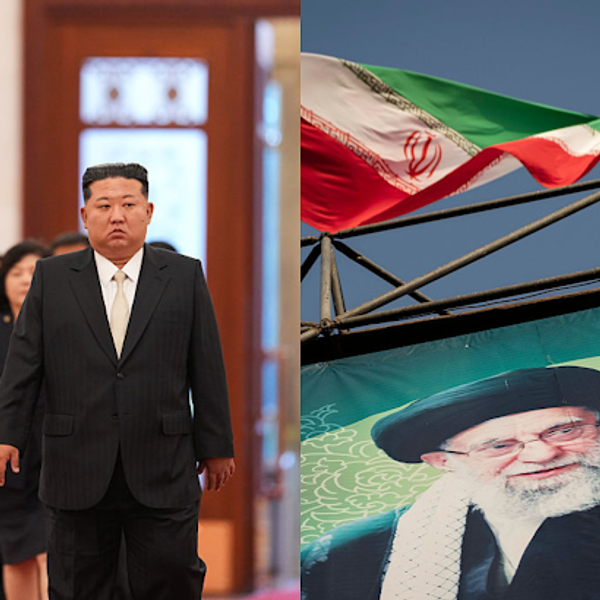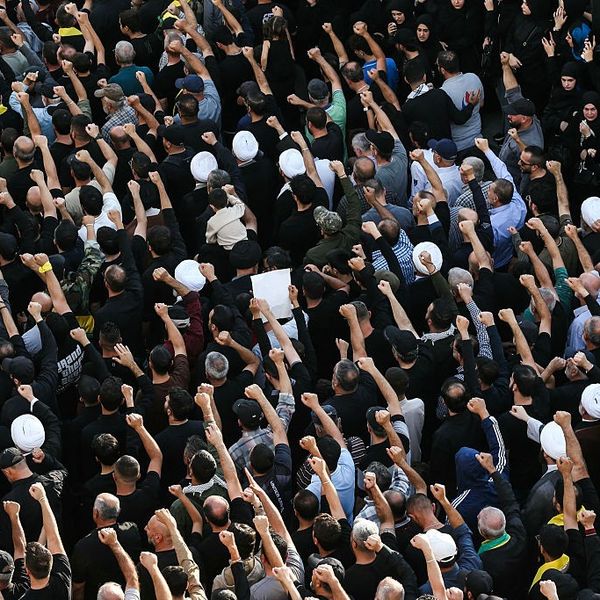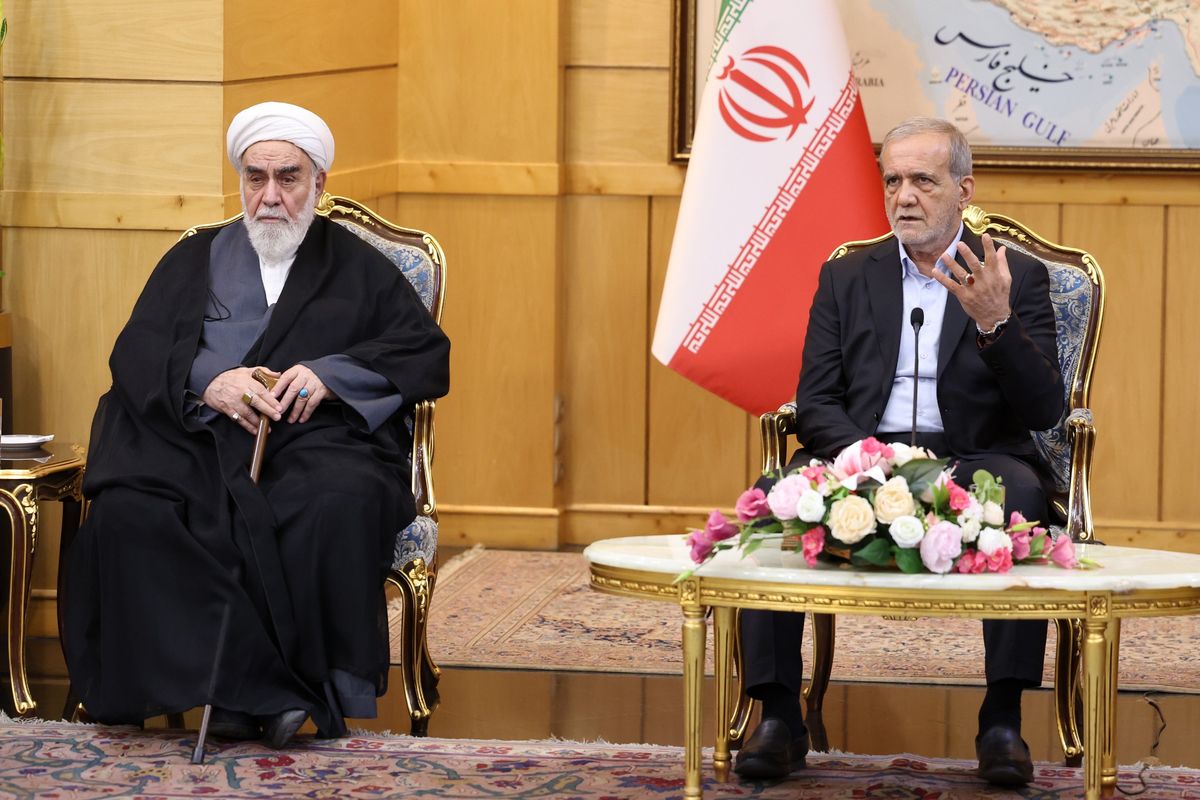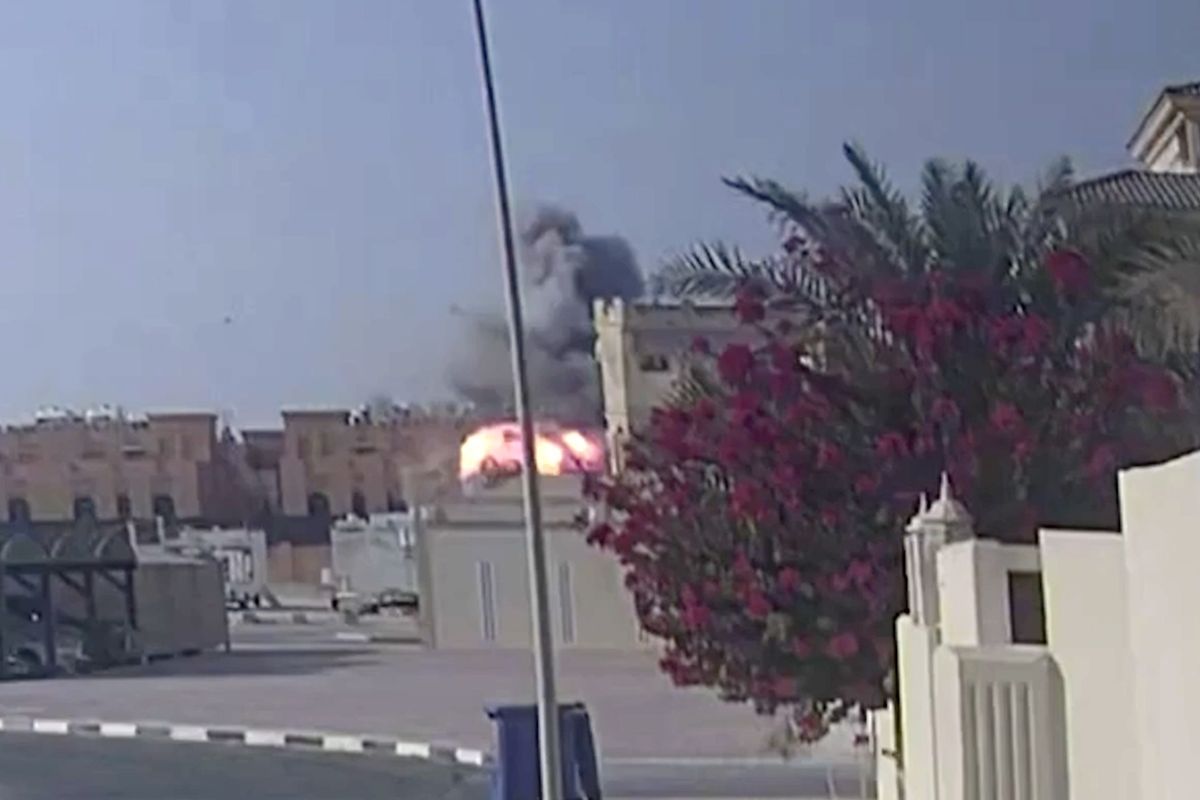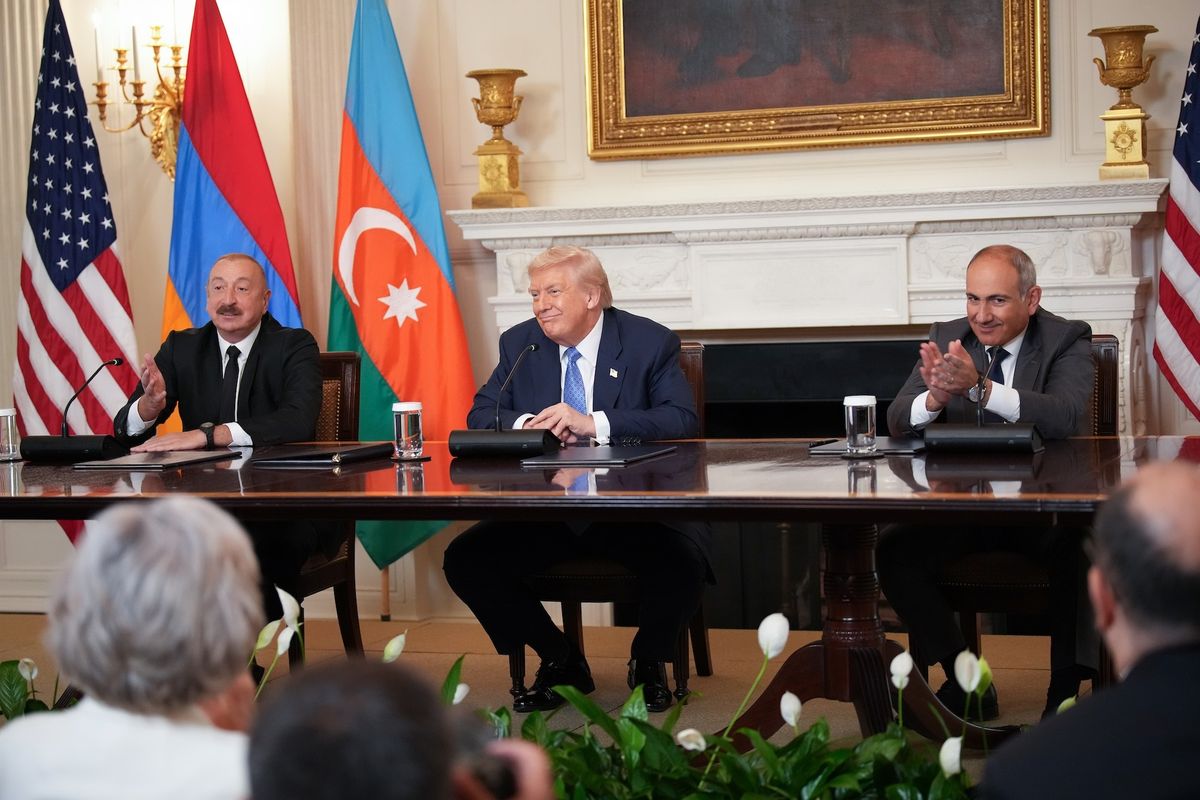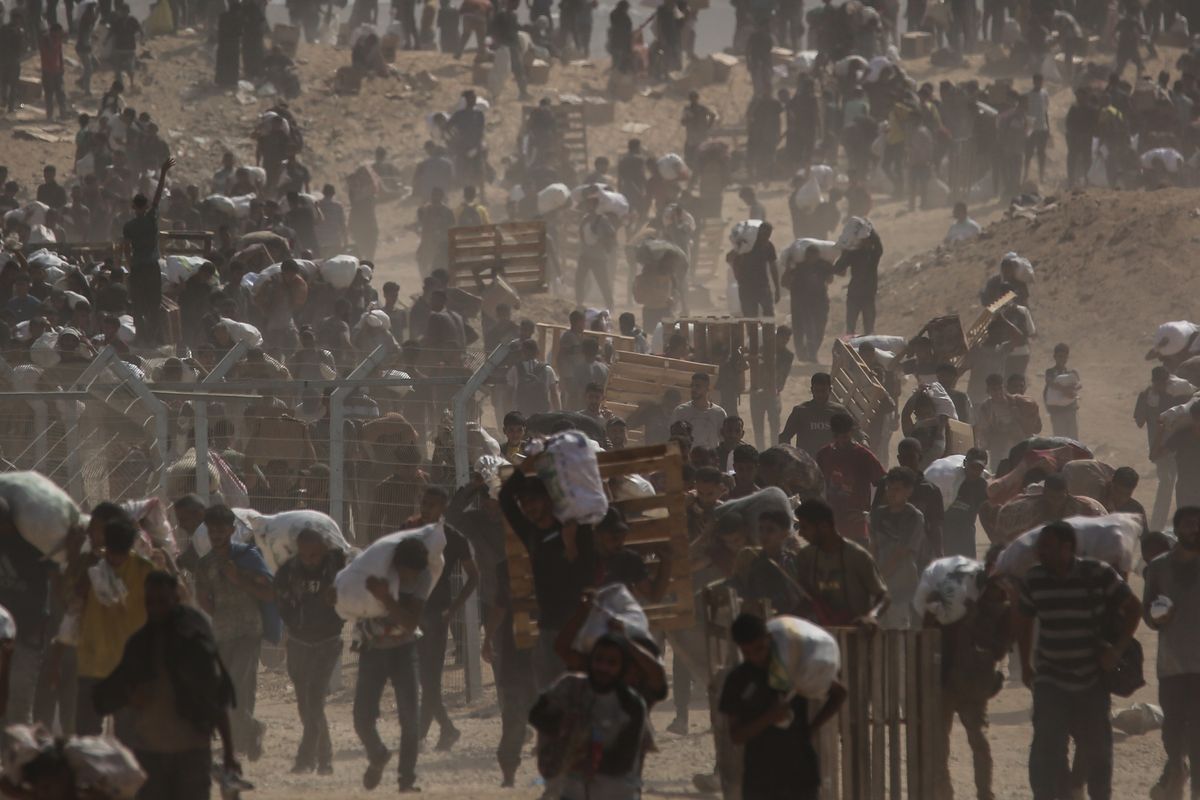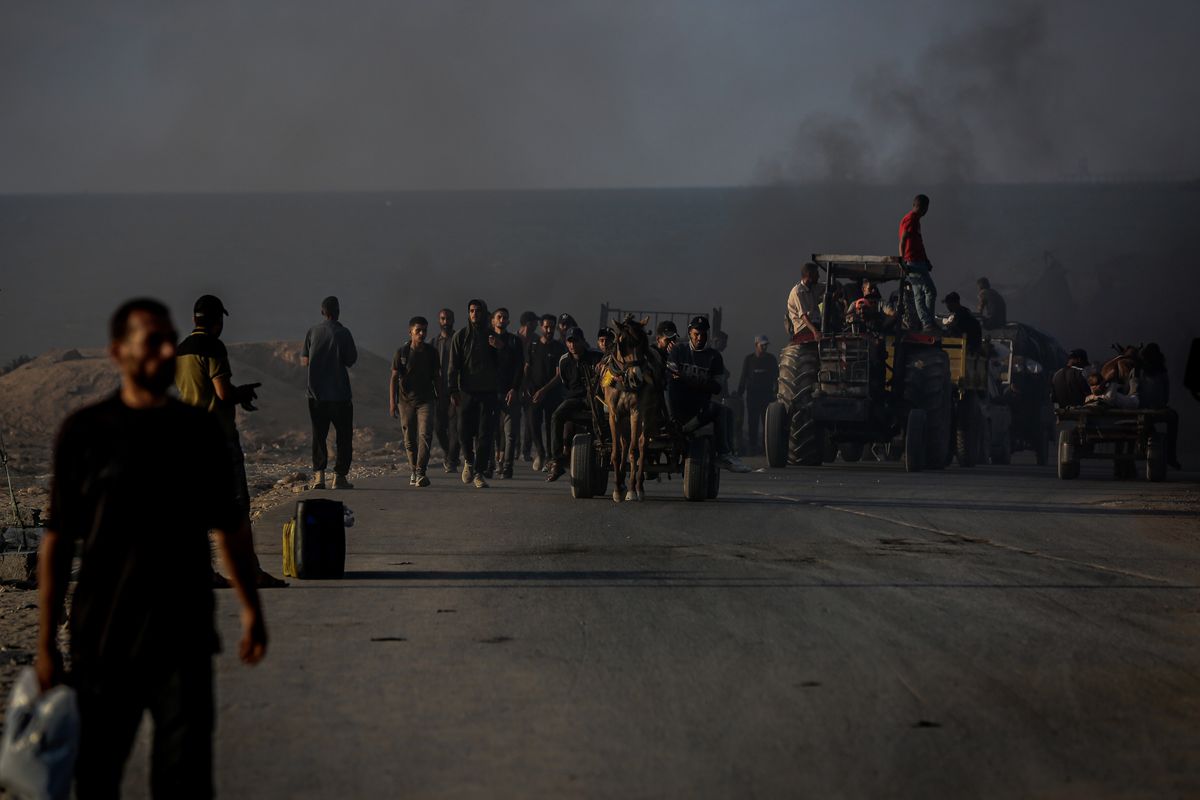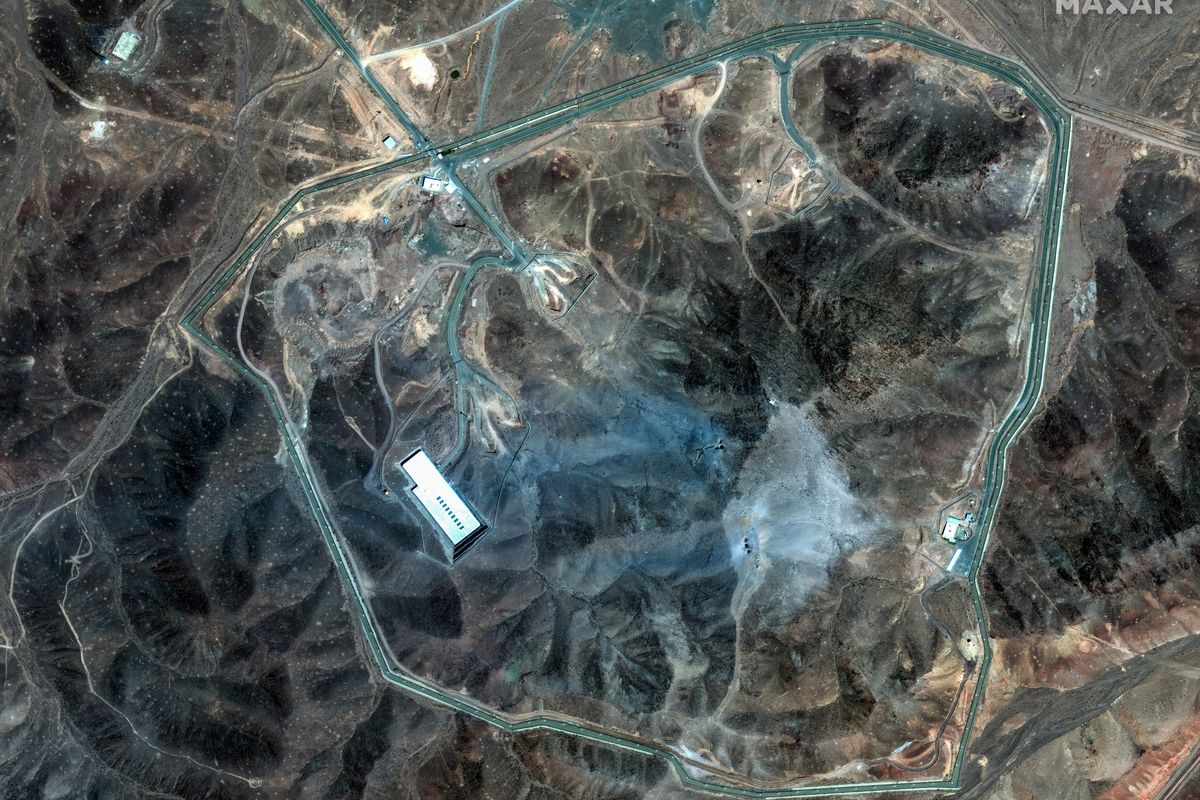“Fate is a wheel that turns; in our pride, we sometimes forget how swiftly it can crush us beneath it.” - Attributed to Shah Ismail I, founder of the Safavid Empire, after his defeat by Ottoman Sultan Selim I at the Battle of Chaldiran in 1514.
“But he hasn’t got anything on!” - Observation of a child in a crowd directed at the King in Hans Christian Andersen’s “The Emperor’s New Clothes,” published in 1837.
EXPERT PERSPECTIVE / OPINION — Iranian Supreme Leader Ali Khamenei has spent decades agitating for the destruction of the State of Israel. He has patiently and persistently overseen a military buildup and the creation of a network of allied militant groups across the Middle East. His aim has been to take the fight to Israel, eject the U.S. from the region, and intimidate Iran’s wealthy but weak neighbors on the southern shore of the Persian Gulf. Missiles and militias underpin his strategy, bolstered by the threat of building a nuclear device.
Before Hamas attacked Israel on October 7, 2024, the Supreme Leader could survey the strategic security landscape in the Middle East with growing confidence. Hamas and Hezbollah brimmed with arms provided or enabled by Iran and were driven by a mostly shared commitment to fighting Israel.
Iran’s Syrian ally, Bashar al-Assad, had largely driven back threats to the survival of his regime, securing Tehran’s ability to ship weapons to Hezbollah via Iraq and Syria. Shia militant groups in Iraq constituted a shadow state, sometimes exercising veto power over Iraqi government decision-making and harassing U.S. forces still stationed in that country.
Across every U.S. administration since Barack Obama, U.S. willingness to challenge Iran in the region has diminished, despite episodic spasms of conflict, most notably when the U.S. military killed Qasem Soleimani in January 2020.
Every state in the region, including our two primary regional partners, Saudi Arabia and Israel, increasingly questioned the U.S. commitment to their security in the face of growing Iranian power.
Meanwhile, Iran’s Houthi partners in Yemen had soundly defeated Saudi Arabia and the UAE in their ham-fisted and ill-fated intervention in that country beginning in March 2015.
Today, the Supreme Leader’s confidence has proved to be illusory and Iran’s strategic position in the Levant is in danger of collapsing.
The most recent blows—the collapse of the Assad regime in Syria—follows Israel’s relentless, brutal, and effective campaigns to decapitate and cripple Hamas and Hezbollah. This turn of events was inconceivable fourteen months ago when Hamas attacked Israel.
The collapse of Tehran’s ally in Damascus will reverberate across the Iran’s interest in the Levant, impeding Tehran’s ability to help Hezbollah rebuild and potentially further reducing Hezbollah’s influence in Lebanon.
Everyone needs a good nightcap. Ours happens to come in the form of a M-F newsletter that provides the best way to unwind while staying up to speed on national security. Sign up today.
From the Supreme Leader’s perspective, events leading to Iran’s current predicament began on October 7, 2024, when Hamas attacked Israel and slaughtered 1,200 people.
Hamas leaders rightly judged that Arab leaders were moving inexorably toward engagement with Jerusalem with little real concern for or interest in the political aspirations of Palestinians in Gaza or the West Bank.
Hamas leader Yahya Sinwar’s attack on Israel forced regional leaders to at least pay lip service again to the Palestinian cause because of widespread anger over the catastrophic civilian casualties caused by the Israeli Defense Forces’ (IDF) response to the Hamas attack. But, as has so often been the case with Palestinian leaders of all stripes, Hamas leadership underestimated Israeli resolve, overestimated their own strength, and misjudged the commitment to their cause by Hezbollah and Tehran.
The results are now clear: Hamas is prostrate and rudderless (the list of senior Hamas leaders—including Yahya Sinwar— killed by Israel across the region is long and growing) and seeking to pause the conflict with concessions that were inconceivable even a few weeks ago.
Meanwhile, the Palestinian people are again left to pay the personal and material costs of a conflict inflicted on them by their leaders, their quest for political rights unfulfilled, and their plight relegated once more to the margins of regional—and, let’s be honest, global—priorities.
Hezbollah’s now mostly dead senior leadership, concerned first and foremost with the group’s survival and political power in Lebanon, conditionally rallied to support Hamas. Hezbollah’s rocket, missile, and drone attacks into Israel—especially in the north—displaced Israeli citizens along the border with Lebanon and threatened to overwhelm Jerusalem’s ability to fight a two-front war.
However, misjudgments about Israeli capabilities and resolve have led to an outcome unimaginable at the start of the conflict. Hassan Nasrallah—Hezbollah’s long-serving and storied leader—is dead, as are dozens of other senior leaders, including two who orchestrated the bombings of the U.S. Embassy and the Marine Corps barracks in Beirut in 1983.
Anger in Lebanon at Hezbollah for starting a war with Israel for a cause not particularly important to most sects in that country’s impossibly complicated political landscape was palpable. Nasrallah’s death was joyfully celebrated in parts of Beirut not under Hezbollah’s boot.
Meanwhile, Israel’s patient, persistent destruction of a large part of the group’s military stockpiles has prompted what is left of Hezbollah’s leadership to do what Nasrallah vowed he would never do—agree to ceasefire conditions favorable to Israel and abandon Hamas (and, it turns out, Assad) to their own fate.
And then there is Iran.
The apex power in the now-diminished Axis of Resistance viewed the conflict as a way to accelerate and consolidate the gains it perceived it had made in its quest to put at risk Israel’s security, if not the existence of the Jewish state itself. Instead, the Supreme Leader now faces the reality that Iran’s primary regional ally—Assad—is gone and that its two most important and powerful partners—Hamas and Hezbollah—have been knocked back on their heels by Israel.
Trust in Iran’s leadership, reliability, and capabilities by the remnants of Hamas and Hezbollah leadership is no doubt diminished, with consequences for future cooperation as the two groups seek to rebuild. Moreover, Tehran’s much-vaunted missile force proved to be more performative for social media than militarily effective in two mass salvos launched against Israel. Instead, Israel’s measured but effective reprisal attacks schooled the Supreme Leader on Iran’s vulnerability to retaliation and weakened Tehran’s defenses against future attacks Jerusalem might choose to launch.
And in Syria, Israel now has almost complete freedom on action to target the weapons stockpiles of the now-deposed regime as Iran stands by, powerless to intervene.
Are you Subscribed to The Cipher Brief’s Digital Channel on YouTube? Watch The Cipher Brief’s interview with CIA Director Bill Burns as he talks about The Middle East, Russia, China and the thing that keeps him up at night.
The Supreme Leader’s woes are compounded by Iran’s many other problems. These include an economy crippled by sanctions and regime corruption and incompetence, a presidential election and runoff in May and June that underscored popular disillusionment with his leadership, and Donald Trump’s re-election, with the promised return to the US maximum pressure campaign against Tehran now imminent.
I doubt the Supreme Leader yet fully grasps the implications for his government and his legacy of the defeats Israel, Assad’s collapse, and karma have dealt him. The most interesting question is whether he now recognizes that the until-now most effective components of Iran’s regional power projection capabilities—Hamas, Hezbollah, and Tehran’s missile forces—are in tatters, and what that means for decision-making in Tehran about whether to take the final steps to build a nuclear device. Netanyahu has promised further action against Iran, and the IDF and Mossad have demonstrated they can deliver on that promise.
Meanwhile, the IAEA now asserts that Tehran has quadrupled its production of uranium enriched to sixty percent. We all have reason to fear the prospect of an Iranian nuclear device, even if Iran’s technical competence is now ever more suspect because of the underperformance of its missiles and other weapons in the conflict.
What is clear is that now is the time to ramp up political, economic, and military pressure on a weakened and vulnerable regime to head off that possibility, even as we relish the regime’s cascading defeats in its struggle with Israel and the United States.
The Cipher Brief is committed to publishing a range of perspectives on national security issues submitted by deeply experienced national security professionals.
Opinions expressed are those of the author and do not represent the views or opinions of The Cipher Brief.
Have a perspective to share based on your experience in the national security field? Send it to Editor@thecipherbrief.com for publication consideration.
Read more expert-driven national security insights, perspective and analysis in The Cipher Brief because National Security is Everyone’s Business.



